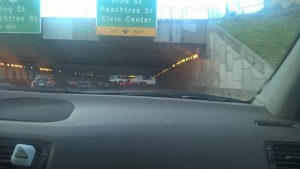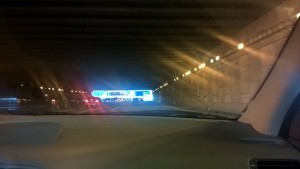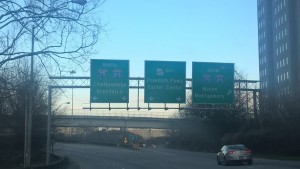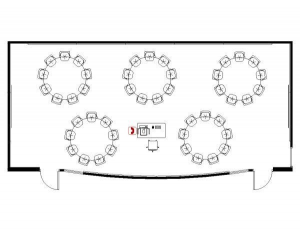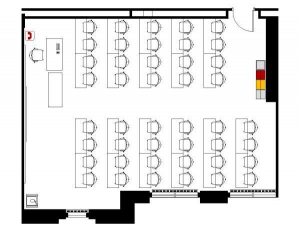Monthly Archives: February 2016
Atlanta Archive: Chattanooga, Freedom Pkwy, and Macon
Annotated Bibliography 6: How Do Animals See Us?
Hosey, Geoff. “Hediger Revisited: How Do Zoo Animals See Us?.” Journal Of Applied Animal Welfare Science 16.4 (2013): 338. Advanced Placement Source. Web. 26 Feb. 2016.
This article is about how animals( specifically zoo animals ) view us, how it is difficult to determine and most likely more difficult with other vertebrates and harder with invertebrates. Most of evidence of the animals perception is through study of primates. When particular animals and human have a history of interactions, to the extent that they can anticipate how the other is going to behave. It can be assumed that a human-animal interaction has taken place. Relationship is defined as a series of interactions in time between two individuals that are known to each other, and the interactions affects the future course of the relationship.
Human-animal relation( HAR) can be established between individuals animals and peoples, but it’s also possible to conceive a generalized HAR between one person and a group of animals. Hedgier stated 5 ways that humans can be perceived by animals: enemy, prey, a symbiont, a part of the inanimate environment, and as a member of the same species.
Annotated Bibliography 5: Choice and Control for animals in Captivity
Kurtycz, Laura M. “Choice And Control For Animals In Captivity.” Psychologist 28.11 (2015): 892-894. Academic Search Complete. Web. 26 Feb. 2016.
The article discuss the subject of learned helpfulness, which is caused by lack of control. Animals in captivity also face this problem. The captivity can lead to serious negative consequences and evidenced behaviorally and psychology. However, the hypothesis is that providing choices to captivated animals may alleviate these choices. Researchers have found that animals all have their own individual preference. Animals like specific food, social partners, and activities. Also, that animals in captivity will work for things they like chimpanzee.
It’s important to understand animals preferences when designing environments and enrichments for them. Researchers have found that having a choice has a positive effect on behavior. Zoo(s) are well equipped to deal with this question, because they usually have animals exhibits with several different locations for the animals. These buildings usually have an indoor and outdoor habitat, one viewable to the public the other is not. For example, when sheep’s where given the option to retreat from the public, they showed lower rates of undesirable behaviors.
Annotated Bibliography 4: Perception of Available space During Chimpanzee Introductions
Herrelko, Elizabeth S., Hannah M. Buchanan-Smith, and Sarah-Jane Vick. “Perception Of Available Space During Chimpanzee Introductions: Number Of Accessible Areas Is More Important Than Enclosure Size.” Zoo Biology 34.5 (2015): 397-405. PsycINFO. Web. 24 Feb. 2016.
The article is about the importance of being able to restrict animals in different places in their enclosure in Animal Management practices. This restriction causes a decrease in available space, which limits the animals activities and effect their social dynamic. A study of the behavioral, welfare-related responses of two groups of housed chimpanzees proved the importance of providing modular enclosure that provide choice and flexible usage. The study showed that arousal related scratching and yawning decreased as the number of enclosure ares increased. The decrease in arousal related yawning and scratching shows the the number available areas in the enclosure is more important then the total amount of space .
One of the important elements of animal management is safely being able to move animals between enclosure areas so they can care for the animals needs. Husbandry requirements may temporarily limit the animals to off-exhibit ares for things like: cleaning, maintenance, or animal introductions.
Atlanta Archive Contribution
Truly Living Well center for Natural Urban Agriculture is committed to growing organic food. TLW has served Atlanta by using natural GMO free food production. Natural urban agriculture is a social design centered on natural food production in the city. Its located at 75 Hilliard St NE, Atlanta, GA 30312.
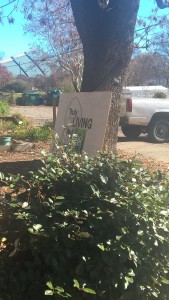
Summary 4: Space and Consequences: The Impact of Different Formal Learning Spaces on Instructor and Student Behavior
This article presents the results of a quasi experimental research projects investigating the impact of two different formal learning spaces. A traditional classroom and a technological enhanced learning classroom. Which will demonstrate clear differences in events taking place in each space. That the different classroom types on the instructor and students. EDUCAUSE the leading organization responsible for promoting the application of new technologies in educational settings, has cause technological enhanced learning spaces to grow.
Though very few empirical studies have shown their impact on educational outcome. Even thought the data gathered is sparse it has begun to gather the attention of respected researchers globally. Using the information gathered from previous quasi experimental research conducted at the University of Minnesota. That found flexible, technologically enhanced classroom spaces improved student learning (which is measured by course grades) more than taking the same course in a traditional classroom setting. The research goes beyond the established evidence that learning spaces matter and instead explains how learning spaces matter.
The experiment used observational data collected for two sections of a single course taught by the same instructor. One section meet in a traditional classroom and the other meeting in a enhanced classroom. Data collected demonstrated that the student and instructor enrolled in the course behaved differently depending on the type of classroom. The temporal nature of the data was used to create a model that showed the casual impact of formal space on level of on task student behavior as a function of the instructor behavior and classroom activities.
The article then begins to describe what has caused institutions of higher education to changes how they approached classroom space. The cause is a host of articles promoting the potential transformative power of formal learning spaces, that teach practices and learning outcomes. Which is affected by the perspective of the interested party. Designers and technologists tend to focus on the architectural characteristics of different spaces. Focusing on the technological innovations that may enhance the teaching and learning experiences that occur.
Those more engaged in the scholarship of teaching and learning highlight the importance pedagogical ( the function or work of a teacher) approaches and issues related to teaching in new learning environment. That highlights lessons learned, best practices, and other practical considerations. Theoreticians offer normative and philosophical treatments of the significance of learning spaces to the process of teaching and learning. Also what these new spaces portend for the future.
The schematic design for a traditional classroom and a active learning classroom. In a traditional classroom the seats are all position in way that their all facing forward and the teacher is in the front. In the Active Learning classroom all the seating are positioned to face each other, and the teacher is seated in the middle. One of the theoretical assumption is that “space exerts situational-related influences on human activities and experience as they are enacted and felt in environmental settings.
D., Christopher.”Space and consequences: The impact of different formal learning spaces on instructor and student behavior”. Journal of Learning Spaces 1:2 June 2012. web. February 16 2016.
Reading Summary 3: Recognizing campus Landscapes as Learning Space
The article starts of describing how American higher education are facing changes and challenges in providing good learning spaces for diverse and evolving needs of college children. Like continued enrollment growth, technological challenges, and financial challenges. In 2009, 20.4 million children were enrolled in 2 or 4 year colleges/universities. Enrollments are also expected to rise 2019, 9% for students under 25 and 23% for students over 25. The article talks about confronting the traditional notions of how university spaces are designed and used for effectiveness.
How Americans expect their universities to look different then other places because it expresses the academic life. Todays universities most encompass more than technological, classroom additions, and its academic buildings. The entire campus including the open spaces most be perceived as a holistic learning space that provides a holistic learning experience. Learning takes place throughout campus not just indoors in designated instructional spaces. Only one-fifth of the students time is spent in the classroom, contributing to one quarter of the learning variance. Open spaces on campus can play an important part in students learning and a strong influence on students initial and long standing experiences. Which promotes a sense of belong to the learning community. However the influences of open spaces are usually overlooked.
The college experience is a stimulating and demanding time in a students life which requires frequent and heavy use of direct focused attention and concentration. Which puts university students at a higher risk of attentional fatigue. Increase in technological use also increase the odds of students attentional fatigue. Campus natural open spaces have sadly not been systematically examined for replenishing cognitive functioning for attentional fatigued students. One way to examine this is to consider the entire campus with its building and natural open spaces as a well-networked landscape system that supports students learning experiences. Highlighting the two concepts: 1. direct and indirect attention and restoration, 2. a holistic landscape.
American colleges and universities were self-sufficient and usually in rural areas with dormitories, dinning halls and recreational areas. Many university founders desired to create a ideal community that was a place apart, secluded from city desecrations but still open to the larger community. The advent of land-grant intuitions through the Morrill Act of 1862 required new buildings to be built with laboratories and observatory space in agriculture. Unlike the classical designs of America’s first institutions, the physical campus of the land- grant was designed to significant contribute to student learning. Fredrik Law Olmstead worked with the philosophy that physical landscape features had a direct impact on shaping human behavior, and offers students experimental education passive or theoretical learning.
Scholl, Kathleen & Gowri Betrabet Gulwadi. “Recognizing Campus Landscapes as learning Spaces”. Journal of Learning Spaces [online] 4.1(2015): n pag. web. 16 Feb. 2016
Achohen.”A Beautiful Space, a Usable Space: The Balance of Library Design “. The Library Incubator. Web. 13 April 2015. 16 February 2016.
Midterm Reflection By: Shayla Nash
This class has shown me that my composition process has involved since high school. In High School as long as I could argue or describe my topic I would pass English with high grades. Now I use the writing workshop to look over my essays and i’m starting to get a better grip on grammar. I also use more scholarly journals as my source of information instead of random websites, because they are a more trusted sources of information then websites. For my class assignments i’ve done reading summaries and annotated bibliography and i’ve used primary and secondary research and now I can use what i’ve learned and improve on what I didn’t understand for the next reading and annotated bibliography assignments.
The way i do my English assignment are also different from high school and English 1101, i got to create a blog and customize it to my liking and post my assignments on their. Which is a lot easier for me since I don’t have the best hand writing, it also saves me a lot of paper. I also post a lot of pictures with my assignments, since more of my class assignments require some sort of visual representation. The only audience for my assignment is my professor and classmates, who can make comments on my work. Which is one of the ways you can earn extra credits, which i have sadly have not been able to yet, but i plan to because i want to earn as many points as I can.
Digital:Atlanta ZOO Website
The official websites of the Atlanta ZOO, http://www.zooatlanta.org/. The main colors used on the website is yellow, green, and red. The main category offers: Visitor info, Animals & Plants, Discover & Learn, and others. With more categorizes vertical to the first with options like buy you ticket . There’s also pictures to accompany the title of each topic. Like the Great ape Heat Project, which has a picture of a read 4 leaf clover with an image of an ape in each leaf. Videos like the “Gorilla cardiac Ultrasound”, for those who like gathering information through sight and sound. The website also offers fun facts, for example, I have the largest heart of any land mammal, what am I? Answer Giraffe. The website uses appealing colors, and an image of a panda, snake, and owl, to appeal to the consumers it’s trying to reach. I also used the color walking technique that I read about in a article written by Phia bennan and Brendan McMullan on the Atlanta Zoo site. I stated with the grass green color of the outline of the atlanta zoo sign to Fun Facts to new arrivals to the Experiences tab to plant and animals tab to the plants and horticulture link.
|
|
 I turn 1 in April! I wouldn’t be where I am today without my supermom. Who am I?
|
||||
New Arrivals
 |
| Eastern Bongo |
Plants and Horticulture
|
|

